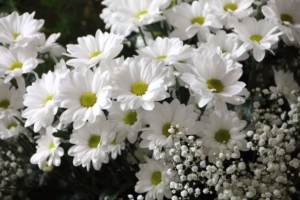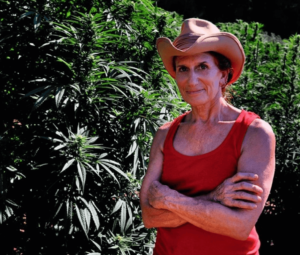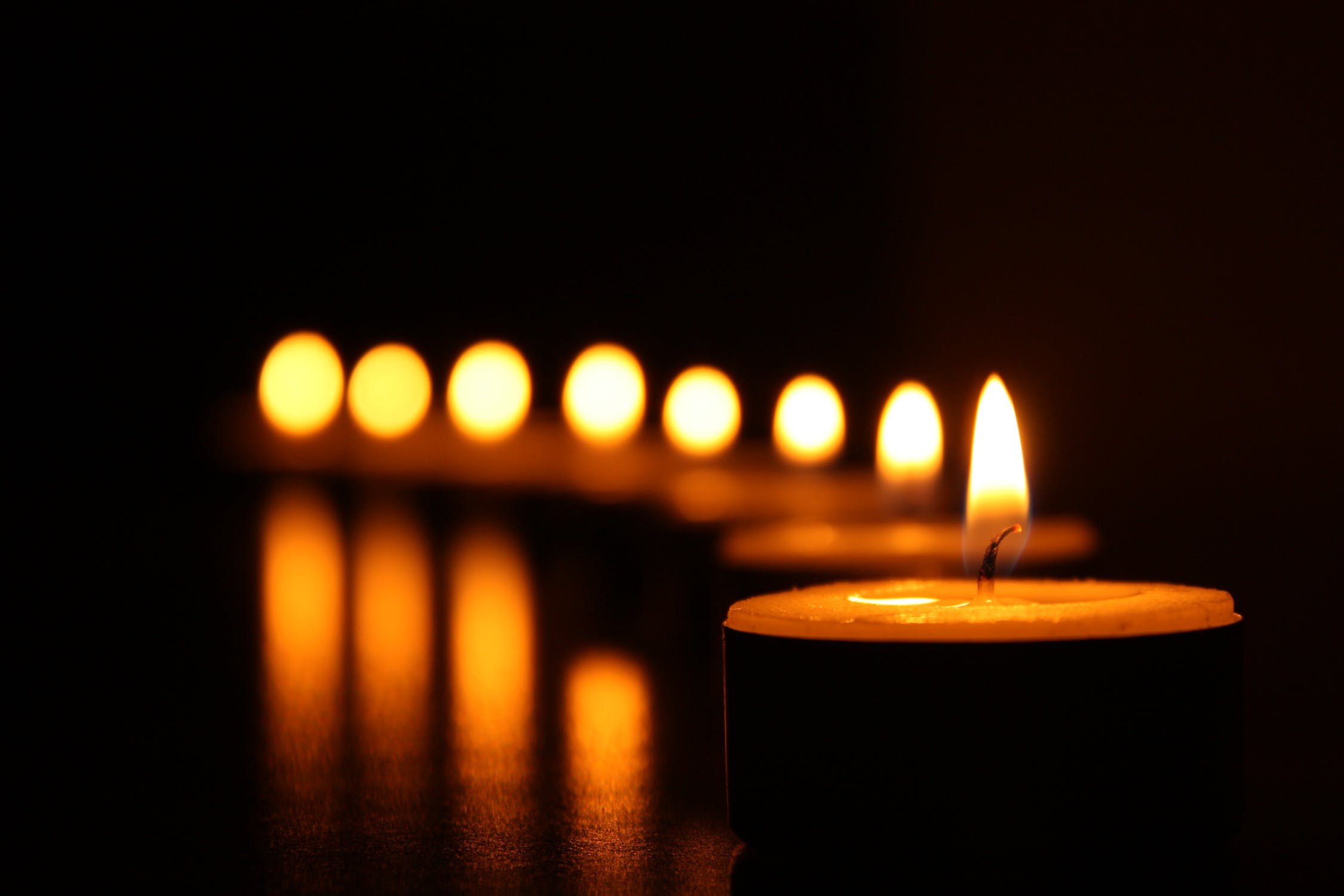Using Cannabis in End-of-Life Care
By: Dr. Genevieve Newton, DC, PhD
As a hospice volunteer, I have seen firsthand the range of symptoms that patients experience at the end of life. Symptoms vary widely. They include issues like fatigue, pain, anorexia, cachexia, dyspnea, anxiety, sleeplessness, and depression.1 It can be an incredibly difficult time for patients and caregivers alike. There is a great need for effective treatments to reduce suffering.
The period near the end of life can involve different types of care. By definition, palliative care is specialized support for people living with a serious illness. Hospice care is provided to a person with a terminal illness with six months or less to live.2 In contrast to hospice care, palliative care is not limited to a specific time or prognosis and can be used alongside curative care.3 Regardless of the definitions used, the goal of end-of-life care (EoLC) is to optimize quality of life. It also addresses not only physical symptoms, but also social, psychological, and spiritual issues.4 In this way, the scope of appropriate therapies is expanded beyond traditional pharmaceutical drugs.
 The importance of cannabinoid therapeutics in EoLC has been acknowledged through some medical cannabis programs in the United States. For example, there is a Terminal Illness Program in Illinois. The program allows patients approaching death certified by their physicians a no-cost expedited pathway to purchase and consume cannabis products from licensed dispensaries.5 Support for such programs is provided by evidence that the use of cannabis is associated with an improvement of many symptoms for terminally ill patients including pain, gastrointestinal, and emotional issues.6,7,8,9 Cannabinoid pharmaceuticals such as Nabilone and Dronabinol are available to treat nausea and vomiting associated with cancer chemotherapy and AIDS, which may be experienced at the end of life. A wide range of plant-based medical cannabis products are also available in the United States and some countries with cannabis laws on the books.
The importance of cannabinoid therapeutics in EoLC has been acknowledged through some medical cannabis programs in the United States. For example, there is a Terminal Illness Program in Illinois. The program allows patients approaching death certified by their physicians a no-cost expedited pathway to purchase and consume cannabis products from licensed dispensaries.5 Support for such programs is provided by evidence that the use of cannabis is associated with an improvement of many symptoms for terminally ill patients including pain, gastrointestinal, and emotional issues.6,7,8,9 Cannabinoid pharmaceuticals such as Nabilone and Dronabinol are available to treat nausea and vomiting associated with cancer chemotherapy and AIDS, which may be experienced at the end of life. A wide range of plant-based medical cannabis products are also available in the United States and some countries with cannabis laws on the books.
Despite its potential benefits, there are many obstacles to integrate cannabis-based medicine (CBM) into EoLC. For example, there is a lack of clinical research regarding the effectiveness of cannabis in treating symptoms when approaching death. There is also limited clinical knowledge regarding how CBM can be initiated and monitored.10 Moreover, physicians such as medical oncologists who treat patients during the end-of-life period often do not feel sufficiently informed to make recommendations about CBM to patients. However, most of them are having conversations with patients and view CBM as a useful therapy.11
An additional issue is the nearly exclusive focus of clinical research on CBM with pharmaceutical cannabinoids. In a 2018 systematic review of cannabinoids in palliative medicine, 10 clinical trials were included. Only one used herbal cannabis. Several benefits to CBM were noted, such as for weight gain and appetite stimulation in HIV patients. But overall, the benefits of CBM were not striking.4
This focus on pharmaceutical cannabinoids is an issue. The exclusion of whole plant cannabis is problematic. The use of isolated THC (Dronabinol and Nabilone) or THC and CBD in a 1:1 ratio (Nabiximols) will reduce the potential for synergies between molecules that occur naturally in the cannabis plant. Major and minor cannabinoids, terpenes, and other phytoconstituents enable the entourage effect which may more effectively reduce symptoms.12 It should be noted that as a herbal cannabis extract, Nabiximols will contain an unspecified quantity of other cannabis-derived molecules such as minor cannabinoids, terpenes and flavonoids, although the amount of CBD and THC is standardized. Also the use of pharmaceutical CBM does not reflect the lived experience of many patients with severe or life-threatening conditions. Many of these patients report using herbal cannabis formulations with a range of THC:CBD ratios, including tinctures, vaporizers, and capsules.13
Based largely on these clinical trials, evidence-based guidelines for cannabis in palliative care have been developed in some jurisdictions. In Canada, one guideline recommends against the use of medical cannabis as a first or second-line option for palliative cancer pain. The recommendation is that CBM should only be considered in the case of refractory symptoms and with careful risk consideration. A second guideline recommends that medical cannabis should only be used when other treatments have failed, and only after weighing potential adverse events and drug interactions.14 Unfortunately, there is a wide breadth of research that is not captured by these guidelines. This includes studies that show cannabis and opioid synergy that allows for opioid doses to be reduced.15,16 They also do not support clinicians in helping patients access CBM.
 Clinical Training Course on Cannabis in Hospice & Palliative Care
Clinical Training Course on Cannabis in Hospice & Palliative Care
For those who are interested in learning more about the scope of this work, the Society of Cannabis Clinicians offers a course by Valerie Leveroni Corral on the topic of Cannabis Use in Palliative Care & End of Life. Valerie is a longtime palliative patient caregiver, the founder of the Wo/Men’s Alliance for Medical Marijuana (WAMM), and the Executive Director of Raha Kudo: Design for Dying Project. She has extensive experience working with dying patients and has advocated to increase access to medical cannabis for over forty years.
Valerie provides valuable clinical pearls gleaned from her personal experience. First and foremost, she emphasizes that it is important to recognize that each patient is unique in terms of their condition and needs, as well as in their response to cannabis products. She notes that observation and monitoring of the patient is extremely important both before and during treatment. She suggests that whole plant cannabis offers greater benefits than individual cannabinoids. Valerie mentions that THC and CBD (along with terpenes) can work together to provide the best benefits. However, she has found that many patients may wish to avoid THC and prefer to use CBD or other cannabinoids.
In the course, Valerie speaks candidly about her use of cannabis in supporting the needs of dying patients over the last many decades. Her presentation of four patient case studies illustrate the unique approaches to using cannabis in EoLC. Each of her patient’s needs were met using a different cannabinoid concentration and ratio that was tailored to each individual based on careful observation and monitoring. The care and compassion shown by Valerie in her caregiving is both humbling and inspiring. This course would be of value to anyone wanting to acquire tools to appropriately gauge cannabis application in end-of-life care.
 Palliative Care Physician Dr. B.J Miller
Palliative Care Physician Dr. B.J Miller
In order to learn more about how clinicians are using cannabis in end-of-life care, I interviewed Dr. B.J. Miller. Dr. Miller is a palliative care physician and the author of A Beginner’s Guide to the End: Practical Advice for Living Life and Facing Death. He is also the former Executive Director of the Zen Hospice Project, and the current President and Counsellor at Mettle Health, a company that provides support and guidance for patients and caregivers facing serious illness.
Dr. Genevieve Newton: In your experience, are patients using cannabis as part of their medical toolbox in end-of-life care? If so, how?
Dr. B.J. Miller: This depends in part on how close to the end-of-life folks are getting. In the final days and weeks, people tend to have more symptoms. They are more dependent on stronger pharmaceuticals. But over the course of a chronic illness where symptoms are less severe, I’ve pointed people to cannabis for the management of a variety of things, such as chemotherapy-related nausea, neuropathic pain, and to improve sleep. As a general statement, I have seen cannabis used more as a form of symptom control than for the treatment of severe symptoms in the period close to death. Also, how people use cannabis at the end of life depends in part on their relationship with it. For those who have used cannabis previously, they are more likely to use it during the end-of-life period.
GN: Do you see cannabis being used to support mental health during the end-of-life period?
BJM: Certainly. People do report cannabis can reduce symptoms of anxiety and depression. Many patients have reported a historical use of cannabis for this purpose, as well as for less clinical outcomes such as relaxation. If someone has a history of using cannabis and is reporting stress, I might encourage them to go back to cannabis and try it in this new context. The plant may also help with existential issues. It may help them to pull themselves out of a rut, approach their situation differently, and enjoy the playfulness of life. However, if a patient is presenting with clinical depression or anxiety that implies severe pathology, I would rarely introduce it in those settings. And if they were using cannabis and their anxiety were getting worse, it might be something that we pull away from for a while.
GN: Compared to traditional medical end of life care, do you think cannabis is a complement, an alternative, or both?
BJM: There’s fluidity to the way we use cannabis. Towards the end of life, I would say that it’s more of a complement. Stronger drugs are often needed to control symptoms, especially pain. Earlier in the end-of-life period, it may be used more as an alternative. If someone is in a mild or moderate pain crisis, cannabis may be an important piece of the puzzle. But in a severe crisis, drugs like morphine are usually required as well.
GN: Do you recommend the use of whole plant cannabis or cannabinoid pharmaceuticals like Dronabinol with your patients?
BJM: I’ve never had much luck with the pharmaceutical versions of cannabinoids. I generally point people to the plant, or a tincture. My recommendation is to use something from the whole plant.
GN: What are some of the barriers that patients face in accessing cannabis in end-of-life care?
BJM: Patients at the end-of-life may face mobility issues, which can reduce access to cannabis. However, fortunately delivery services are now widely available in many states. More specifically, patients may have difficulty accessing certain varieties of cannabis that they find most beneficial. A more important issue around accessibility relates to information. It can be difficult to access trustworthy resources on cannabis products and how to use them effectively.
GN: Are there barriers that patients might face specifically in a hospice setting?
BJM: Much of the hospice care in many states is now done at home. In that setting, there are no restrictions. At a hospice facility, there are regulations that must be followed. People are not allowed to smoke inside. So that form of cannabis consumption will be limited only to patients who are ambulatory or can otherwise go outside. In a hospice facility, alternatives to cannabis combustion such as tinctures, lozenges, and gummies could be considered.
GN: What is the typical stance of palliative/hospice physicians on cannabis access for patients?
BJM: I think that most palliative care physicians are on the cannabis-friendly side of the spectrum. We deal primarily with symptom control as the bailiwick of palliative care, and cannabis can be helpful with that. Another important issue in palliative care is treating a person’s sense of agency and giving them as much freedom and control as possible. As pointed out by my colleague David Casarett, cannabis puts some control back into the hands of the patient. Oftentimes, we’re just blessing what patients are already doing with the plant. One issue is that end-of-life patients with lung problems are usually advised against inhaling cannabis smoke. But there are alternative modes of consumption in this situation.
GN: What are some of the barriers that doctors face in recommending cannabis to patients in end-of-life care?
BJM: I think a lot of people presume that they have liability issues. There are also cultural barriers coming from the healthcare field, which may be because cannabis doesn’t come from Big Pharma. I don’t think any of my colleagues in medicine have a love affair with Pharma, but it is tricky to recommend plants. It’s also difficult to have access to good information, including knowledge about different cannabis varieties and their cannabinoid profiles. I hope that body of knowledge is being developed. But right now it’s all over the place. I’ve also heard from people over the years that cannabis has gotten so much stronger than they’re used to. So, for a physician, it makes it a little mysterious to recommend cannabis with great confidence.
GN: Do you have any advice for doctors who are interested in using cannabis to support their patients at the end of life?
BJM: Yes – get informed. There are articles written in the palliative care literature from time to time. Cannabis is also usually discussed at palliative care conferences. If you were to go to our annual three- or four-day conference, you would probably find one or two talks that involve cannabis. And if this is something that you’re interested in, dig deeper. Education on cannabis is not part of the basic training that we presently get.
Literature Review
The SCC recently profiled a valuable review article on the use of cannabis in hospice and palliative care. This paper by Cyr et al. from 2018 discusses current challenges in using cannabis in palliative care and provides many practical recommendations, such as:
- Inform patients that individual responses to CMB can vary, and that the evidence for treatment of many symptoms is still inconclusive.
- Consider the use of longer lasting cannabis preparations (such as oils) as a harm reduction strategy for patients. This can be used to activate pleasure reward pathways when their survival is estimated to be several months or more.
- Use cannabis with caution in patients with severe cardiac or pulmonary disease.
- Recommend CBD-rich formulations for those with a personal or family history of psychotic disorders.
- Encourage patients to try different chemovars with similar THC:CBD ratios and track their personal responses.10
This paper is a must-read for anyone with an interest in CBM and palliative care. As stated by the authors:
“…the clinical usefulness of CBM, still considered by many to be limited to pain control, appears to encompass a much broader range of symptoms encountered in palliative care settings.”
In conclusion, patients, clinicians, and caregivers support the value of using cannabis in EoLC even if clinical research and supportive practice guidelines are lacking. More clinical research is needed. This should better reflect the real-life use of cannabis, which includes primarily herbal (rather than pharmaceutical) preparations. Cannabis can be incorporated into end-of-life care in a variety of ways, both as an adjunct and a complement to traditional care. It can provide support to patients for a wide range of not only physical, but also emotional and spiritual needs. It is a valuable addition to the end-of-life toolbox.

Dr. Genevieve Newton has spent the past 19 years as a researcher and educator in the field of nutritional sciences. A series of personal health crises led her to discover the benefits of medicinal cannabis, and she soon found herself engrossed in studying the endocannabinoid system and therapeutic applications of cannabis/cannabinoids in mental health, pain, sleep, and neurological disorders. Genevieve is the Scientific Director of a new medical education and CBD company and an Adjunct Professor at the University of Guelph.
More By Dr. Newton
- Tic Disorder Management with Cannabis: A Family’s Tale Meets the Science
- Cannabis, Anxiety & Depression
Courses of Interest
References
- Van Lancker A, Velghe A, Van Hecke A, Verbrugghe M, Van Den Noortgate N, Grypdonck M, Verhaeghe S, Bekkering G, Beeckman D. Prevalence of symptoms in older cancer patients receiving palliative care: a systematic review and meta-analysis. Journal of pain and symptom management. 2014 Jan 1;47(1):90-104.
- U.S. Department of health and human services. (2021). “What are Palliative Care and Hospice Care?”. National Insitute on Aging.
- Connor SR, Gwyther E. The worldwide hospice palliative care alliance. Journal of pain and symptom management. 2018 Feb 1;55(2):S112-6.
- Mücke M, Weier M, Carter C, Copeland J, Degenhardt L, Cuhls H, Radbruch L, Häuser W, Conrad R. Systematic review and meta‐analysis of cannabinoids in palliative medicine. Journal of cachexia, sarcopenia and muscle. 2018 Apr;9(2):220-34.
- Croker III JA, Bobitt J, Sanders S, Arora K, Mueller K, Kaskie B. Cannabis and End-of-Life Care: A Snapshot of Hospice Planning and Experiences Among Illinois Medical Cannabis Patients With A Terminal Diagnosis. American Journal of Hospice and Palliative Medicine®. 2021 May 18:10499091211018655.
- Bar-Sela G, Vorobeichik M, Drawsheh S, Omer A, Goldberg V, Muller E. The medical necessity for medicinal cannabis: prospective, observational study evaluating the treatment in cancer patients on supportive or palliative care. Evidence-Based Complementary and Alternative Medicine. 2013 Jan 1;2013.
- Johannigman S, Eschiti V. Medical use of marijuana in palliative care. Clinical journal of oncology nursing. 2013 Aug 1;17(4).
- Savage SR, Romero-Sandoval A, Schatman M, Wallace M, Fanciullo G, McCarberg B, Ware M. Cannabis in pain treatment: clinical and research considerations. The Journal of Pain. 2016 Jun 1;17(6):654-68.
- Strouse T. B. (2015). Pot in palliative care: what we need to know. Journal of palliative medicine, 18(1), 7–10.
- Cyr C, Arboleda MF, Aggarwal SK, Balneaves LG, Daeninck P, Néron A, Prosk E, Vigano A. Cannabis in palliative care: current challenges and practical recommendations. Ann Palliat Med. 2018 Oct 1;7(4):463-77.
- Braun IM, Wright A, Peteet J, Meyer FL, Yuppa DP, Bolcic-Jankovic D, LeBlanc J, Chang Y, Yu L, Nayak MM, Tulsky JA. Medical oncologists’ beliefs, practices, and knowledge regarding marijuana used therapeutically: a nationally representative survey study. Journal of Clinical Oncology. 2018 Jul 1;36(19):1957.
- Anand U, Pacchetti B, Anand P, Sodergren MH. Cannabis-based medicines and pain: A review of potential synergistic and entourage effects. Pain Management. 2021 Jul;11(4):395-403.
- Kim A, Kaufmann CN, Ko R, Li Z, Han BH. Patterns of medical cannabis use among cancer patients from a medical cannabis dispensary in New York state. Journal of palliative medicine. 2019 Oct 1;22(10):1196-201.
- CADTH. (2019). Medical Cannabis Use in Palliative Care: Review of Clinical Effectiveness and Guidelines – An Update. Health Technology Review.
- Cichewicz DL. Synergistic interactions between cannabinoid and opioid analgesics. Life sciences. 2004 Jan 30;74(11):1317-24.
- Welch SP. Interaction of the cannabinoid and opioid systems in the modulation of nociception. International Review of Psychiatry. 2009 Jan 1;21(2):143-51.


